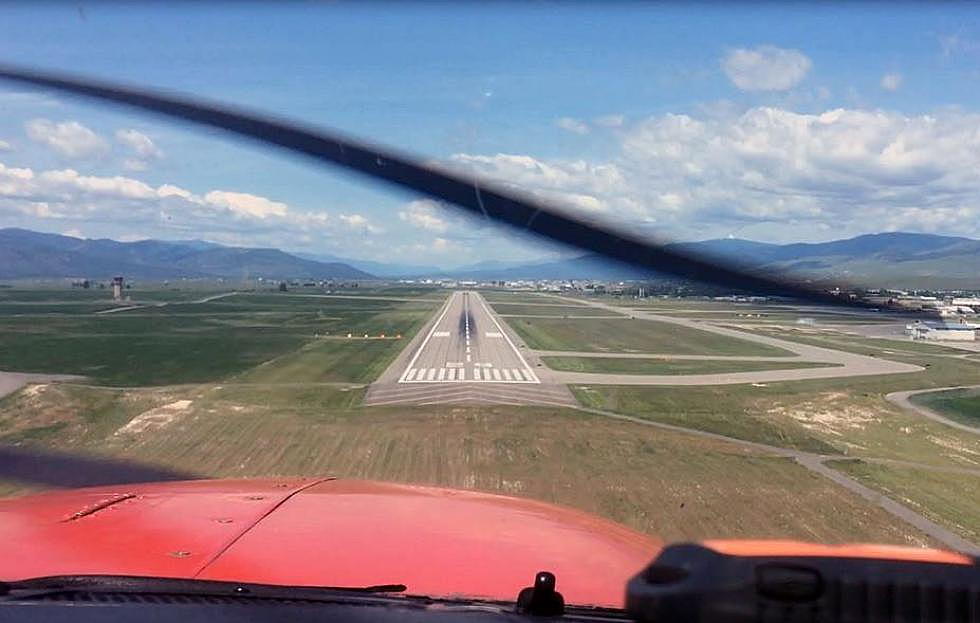
Missoula airport looks to reduce bird strikes by changing agricultural uses
When Skywest Airlines flight 5535 took off from Missoula International Airport in 2014, it was 50 feet off the ground when it struck a ferruginous hawk, causing minor damage to the jetliner's nose.
The next year, Horizon Air flight 2348 reported striking a rock pigeon during approach. Months later, a European starling struck the windshield of Skywest flight 6486, also as the aircraft came in to land.
Concerned about the number of bird strikes, airport officials are taking aggressive action to mitigate wildlife activity in and around Johnson-Bell Field. As many as 12 bird strikes were reported last year, a figure the airport looks to reduce.
“This year, just because of the number of birds, we've been far more aggressive than we ever have in the past,” said airport director Cris Jensen. “Turkey vultures are probably the greatest concern because they're the biggest. If we hit one of those, it has the potential to do some real damage.”
While bird strikes and wildlife encounters haven't resulted in any recent aircraft mishaps in Missoula, they have elsewhere.
The most famous incident took place in 2009 when U.S. Airways flight 1549 struck a flock of Canada geese shortly after takeoff from LaGuardia Airport. The encounter forced the flight crew to land the Airbus A320 in the Hudson River with 155 passengers on board.
To avoid a similar mishap, airport officials in Missoula teamed up with Jared Hedelius, a biologist from the U.S. Department of Agriculture, to tour the airfield and surrounding property and make recommendations on land-use changes that could reduce the bird activity.
“In 2003 and 2008, we purchased about 520 acres from Earl 'Doc' Pruyn,” said Lynn Fagen, the airport's legal representative. “As part of the purchase, he got an agricultural lease for 10 years and we've been turning that over year by year. Since we've had a lot of bird issues this year, we weren't quite sure what we should do with that land.”
The question focused in part on irrigation and farming activity and where it should be permitted. The review covered a large swath of property both east and south of the airfield. The airport is holding much of the property for the future addition of a parallel runway, though it wants to keep the land in production until it's needed.
Rollette Pruyn continues to lease the property for agriculture.
“Initially, we were going to let that lease with Pruyn expire and eliminate all of this,” said Jensen. “Now our thought process is that we'll continue to farm it and irrigate it, but not anything inside the (airport) fence. We're hoping to pull all that bird activity out of there.”
Recent strike reports filed with the FAA from Missoula cover a wide range of species, including a number of American kestrels, ferruginous hawks, red-tail hawks, sparrows, gray partridge, rock pigeons and blue-winged teals, among others.
The larger the bird, the greater the risk. Back in 2006, a red-tailed hawk took out the nose of a Jetblue Airways aircraft. The traveling football team had to be transferred to another flight.
“The hawks and kestrels are being attracted not so much by the agricultural activity itself,” said Jensen. “They're not coming to feed on grain. They're coming to feed on the rodents they're able to find. Once we mow that field, it's easy to see the voles, the mice and ground squirrels.”
Jensen said the USDA review concluded that the nearby wetlands aren't what's attracting a majority of the birds. Rather, it's the food and the airport's agricultural activities.
The airport has long hayed the infield grass that parallels the main runway. Cut down to stubble, it reveals the rodents to the raptors above, making it a lucrative hunting ground.
As a result of the report, Jensen said, the airport will discontinue haying and will reduce the number of times it mows the field within the airport.
“We asked if it made sense to curtail the farming,” said Jensen. “When he (the biologist) saw the size of our land, he said to farm but don't farm along the runway. That will pull all these birds down to the areas that are being farmed. That's kind of the direction we're going now.”
